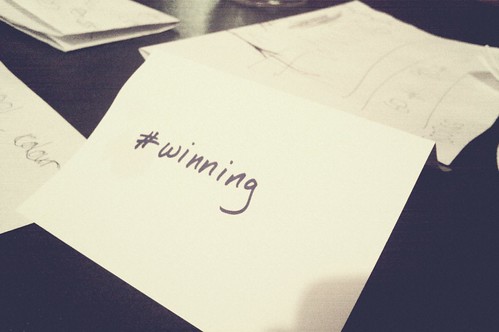In our presentation for libr559m, which our group did on (my) Thursday, Dean asked us what we’d learned that we hadn’t known before in creating our project. At the time I mentioned the technical stuff about working with Drupal. Afterwards I was asking myself how much of this course was just me performing. I mean, I grew familiar with a bunch of tools over the course of the past 6 weeks, but I had some pretty firm social media habits coming into the course, so it’s not like I’ve now discovered Google Reader and nothing will be the same again. (Glogging isn’t really for me.)
I think the biggest thing I learned (apart from generally being impressed by my study buddy’s insight and principles, but that’s not really the domain of the class) was how relatively painless it can be to work with people across so many timezones. I didn’t feel disconnected from the class even though we didn’t share a hemisphere. That in itself is an experience that’s useful.
Another question Dean asked at the end of our presentation was whether I ever feel information overload. I assume this is because I’ve been pretty visible in my quasi-prolific use of these tools (though if you check the Storified summations of the class you’ll see a lot of other people posting more than me on Twitter). I think that’s where my performing this class kind of comes in. Normally I’m more of a lurker. I use these tools but for my own benefit, to suck things into my own head. I was trying to take the opportunity of doing a class in social media to work on being a more active producer in this sphere. If you take your classes as a means of developing yourself professionally, well, if I’m going to be paid to be on Twitter someday my employers would want to see some results, not just that I’m full of neat tales from BoingBoing. I think I’ve got a better handle on being a visible social media producer now. For what it’s worth, my Klout score jumped quite a bit since the course began.
I think I’m negotiating a good balance between being a social media user (which I was) and an evangelist (which I won’t ever be). Finding some middle space there seems like a good result, and a good use of three of my precious credit hours for the degree.
